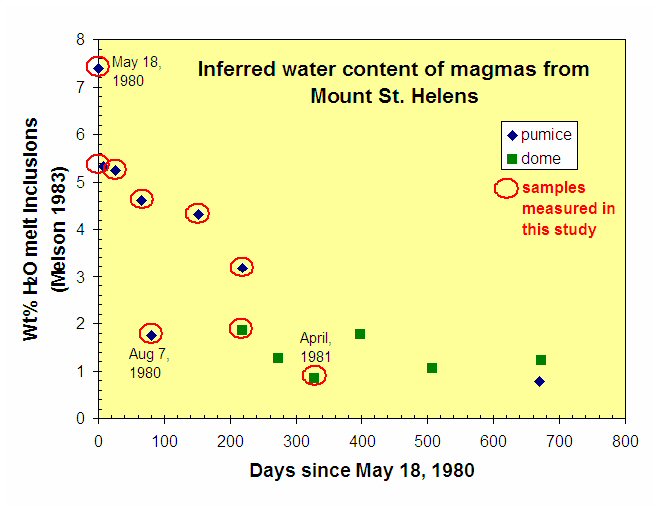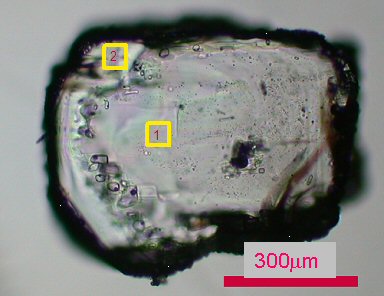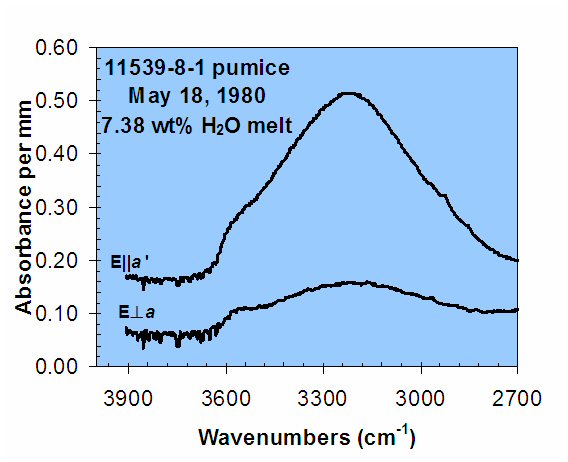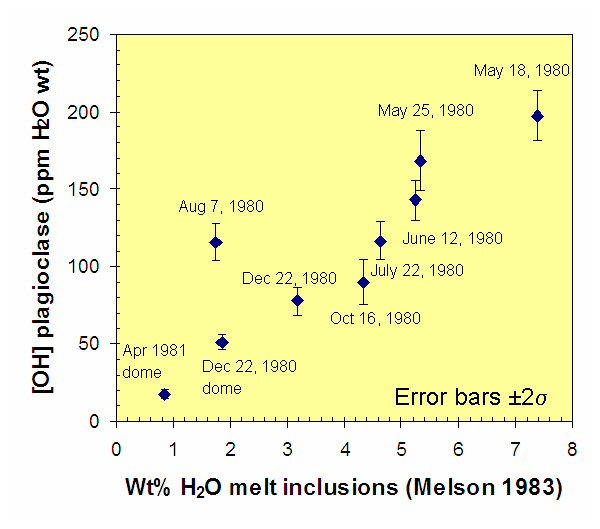On May 18, 1980, Mount St. Helens underwent a catastrophic, explosive eruption that sent material from a blast cloud up to 17 miles from the volcano on the north side and sent ash 15 miles into the air. Pyroclastic flows from the volcano reached as far as 5 kilometers away. Ash from the explosion reached the east coast of United States in 3 days and circled the globe in 15 days. This explosion produced ash that covered an estimated 22,000 square miles of land. 56 people and numerous animals were killed in the explosion. [1]
Experimental constraints on the presence of amphibole crystals in the erupted pumices and measured water contents of melt inclusions [2,3] show that the magma from the May 18, 1980 eruption contained at least 4.6 wt% H2O prior to this eruption, and originally came from a depth of at least 7.2 km.
A series of eruptions followed the May 18, 1980 event. Most of the early eruptions were pumice-forming explosive eruptions, whereas most events after April 1981 were effusive, dacite dome-forming eruptions. It has been shown that the water content of the magmas decreased over time [4], even though the temperature and degree of oxidation (oxygen fugacity) of the magma remained constant from 1980 through 1981[2].



